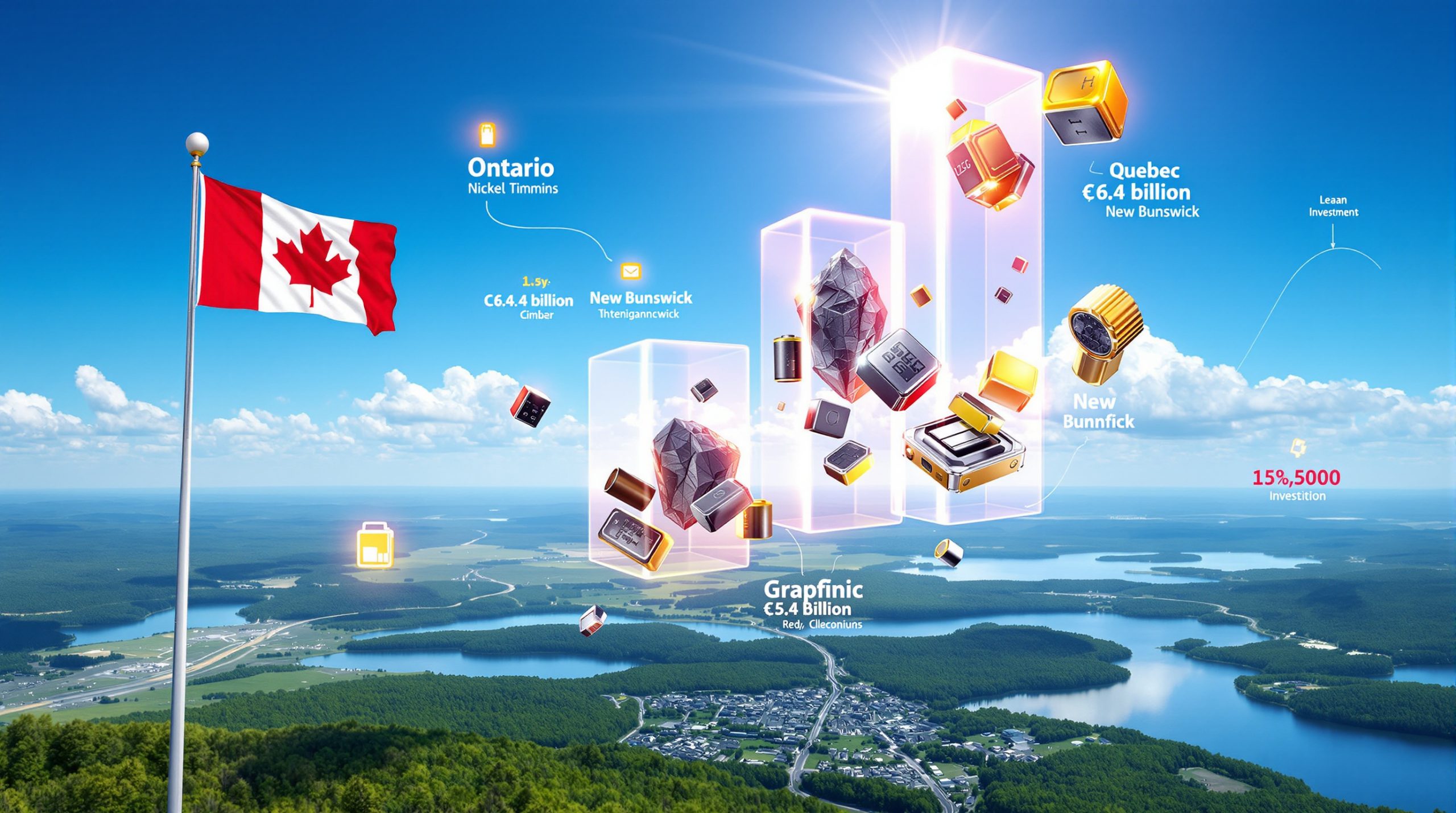Understanding the Simandou Iron Ore Mine and Its Global Significance
The Simandou iron ore mine represents one of the most substantial undeveloped iron ore deposits globally, positioned in Guinea's southeastern region. This massive project has captured international attention due to its potential to reshape global iron ore supply chains and challenge established market dynamics.
Recent developments suggest renewed momentum for this long-delayed project, with industry observers noting significant progress toward operational status. Furthermore, the project's scale and strategic importance have made it a focal point for discussions about future iron ore price trends and global pricing mechanisms.
Comparing Simandou's Scale Against Global Iron Ore Operations
Simandou stands apart from other major iron ore operations through its combination of substantial reserves and high-grade ore quality. The deposit contains an estimated 2.4 billion tonnes of proven and probable reserves, with iron ore grades averaging between 65-67% iron content, significantly higher than many established operations.
| Deposit | Location | Estimated Reserves (Billion Tonnes) | Average Grade (% Fe) |
|---|---|---|---|
| Simandou | Guinea | 2.4 | 65-67% |
| Mount Whaleback | Australia | 1.8 | 62-64% |
| Carajas | Brazil | 7.2 | 66-67% |
| Mount Gibson | Australia | 0.15 | 58-62% |
The deposit's high-grade characteristics distinguish it from many Pilbara operations, where ore grades typically range between 55-62% iron content. This quality advantage could provide competitive benefits in transportation costs and processing efficiency, particularly for steel mills requiring premium-grade inputs.
Guinea's geological formations contribute unique characteristics to the Simandou iron ore mine orebody. The deposit consists primarily of itabirite formations, similar to those found in Brazil's Iron Quadrangle region. Consequently, these formations typically yield consistent ore grades across extensive areas, supporting large-scale, long-term mining operations.
Recent Momentum Behind Simandou's Development
Industry reports from November 2025 indicate that the project has achieved a positive Final Investment Decision (FID), marking a critical milestone after decades of development challenges. This decision represents formal commitment from project backers to proceed with construction and development activities.
The achievement of FID status follows years of complex negotiations involving multiple international stakeholders, regulatory approvals, and infrastructure planning. This milestone signals the transition from feasibility studies and preliminary agreements to active construction and development phases.
Current project backing involves a consortium structure featuring Rio Tinto as the primary operator alongside Chinese investment partners. This international collaboration reflects the project's strategic importance for both Western mining companies seeking growth opportunities and Chinese entities pursuing supply chain diversification.
Economic Implications of Simandou Development
Potential Impact on Guinea's Economy and Infrastructure
The Simandou iron ore mine promises substantial economic transformation for Guinea, with projected contributions spanning direct mining revenues, infrastructure development, and employment creation. Industry estimates suggest the project could contribute significantly to Guinea's gross domestic product once operational.
Key Economic Projections:
- Government Revenue: Potential annual royalties and taxes exceeding $1 billion once at full production
- Employment: Direct employment of approximately 8,000-10,000 workers during peak construction
- Operational Jobs: Long-term operational workforce of 3,000-4,000 positions
- Local Economic Multiplier: Estimated indirect job creation of 15,000-20,000 positions across supporting industries
The project necessitates construction of a comprehensive railway system spanning over 650 kilometers from the mine site to coastal port facilities. This infrastructure represents one of Africa's largest mining-related transportation projects, with estimated construction costs exceeding $15 billion for the combined rail and port development.
Port construction involves developing new deep-water facilities capable of handling Capesize vessels, with targeted annual throughput capacity of 100-110 million tonnes. These facilities will require specialized equipment for iron ore loading and storage, representing additional billions in infrastructure investment.
Implications for Australian Economy and ASX Miners
Simandou's emergence as a significant iron ore supplier has generated considerable discussion within Australia's mining sector. In addition, some industry observers have described it as a potential challenge to Western Australia's iron ore export dominance, affecting iron ore demand insights across the region.
Competitive Analysis of Major ASX Iron Ore Producers:
| Company | 2024 Production (Mt) | Primary Operations | Potential Exposure |
|---|---|---|---|
| BHP (BHP) | 254 | Pilbara, Western Australia | High – volume competitor |
| Rio Tinto (RIO) | 320 | Pilbara, Western Australia | Moderate – Simandou partner |
| Fortescue (FMG) | 191 | Pilbara, Western Australia | High – similar grade positioning |
| Mineral Resources (MIN) | 18 | Various WA operations | Low – smaller scale focus |
The competitive landscape analysis suggests varying degrees of exposure among Australian producers. BHP and Fortescue potentially face the most direct competition, as their operations target similar market segments and customer bases that Simandou may serve.
Industry discussions have included scenarios where increased global iron ore supply from the Simandou iron ore mine could pressure pricing for Australian exports. However, the timeline for such impacts depends heavily on Simandou's production ramp-up schedule and global demand growth. This situation could be further complicated by us tariffs impact on global trade patterns.
Market analysts note that Australian producers maintain certain advantages including established logistics networks, operational experience, and proximity to key Asian markets. These factors may help mitigate competitive pressures, though long-term market share dynamics could shift as Simandou reaches full production capacity.
China's Strategic Role in Simandou's Future
Chinese Investment and Rio Tinto Partnership Structure
Chinese involvement in Simandou extends beyond simple investment, representing a strategic approach to securing long-term iron ore supply sources outside traditional Australian and Brazilian suppliers. This involvement aligns with China's broader objectives of supply chain diversification and reduced dependence on any single supplier nation.
The joint venture structure combines Rio Tinto's operational expertise with Chinese financial backing and market access. Chinese partners bring both capital resources and guaranteed off-take agreements, essential components for project financing and long-term viability. This approach mirrors other successful zijin mining strategy initiatives in international markets.
Recent industry discussions have highlighted tensions between Chinese steel mills and Australian iron ore suppliers. However, official statements from both Chinese government representatives and BHP have sought to minimise concerns about systematic trade restrictions. These dynamics underscore the strategic importance of alternative supply sources like Simandou for Chinese steel production.
Global Iron Ore Trade Pattern Shifts
Simandou's emergence as a major supplier could fundamentally alter established iron ore trade routes and pricing mechanisms. Traditional supply patterns have centered on Australian Pilbara mines serving Asian markets and Brazilian operations serving both Asian and European customers.
Potential Trade Flow Changes:
- New Atlantic Supply Route: Guinea to Asia represents a different shipping pathway compared to established Pacific routes
- Freight Rate Implications: New trade routes may affect global shipping costs and vessel deployment patterns
- Contract Structure Evolution: Long-term supply agreements may incorporate new benchmarking and pricing mechanisms
- Regional Market Rebalancing: European and Middle Eastern steel mills may gain improved access to high-grade ore supplies
The project's scale suggests it could influence global iron ore pricing through increased supply availability. Nevertheless, the magnitude of such effects depends on concurrent demand growth from steel-producing nations. Market volatility could increase during the initial production ramp-up period as buyers and suppliers adjust to new supply dynamics.
Infrastructure and Logistical Framework
Transportation System Development
Ore transportation from the Simandou iron ore mine requires construction of comprehensive logistics infrastructure connecting the inland mining operation to coastal export facilities. The planned railway system represents one of the most ambitious mining-related infrastructure projects globally.
Railway Specifications:
- Total Length: Approximately 650 kilometers from mine to port
- Gauge: Standard gauge design for heavy haul operations
- Capacity: Designed for 100+ million tonnes annual throughput
- Route: Traverses multiple geographic regions and crosses international borders
The railway construction faces significant engineering challenges including mountainous terrain, river crossings, and varying geological conditions. Environmental considerations require careful planning around sensitive ecosystems and local communities along the proposed route.
Port facilities development involves creating deep-water infrastructure capable of accommodating the world's largest bulk carriers. The port design incorporates modern automation systems for efficient ore handling and storage, with environmental controls for dust management and water treatment.
Project Timeline and Milestones:
| Year | Project Phase | Key Milestones |
|---|---|---|
| 2025 | Construction Launch | Major earthworks commence, equipment procurement |
| 2026 | Infrastructure Build | Railway construction accelerates, port development begins |
| 2027 | Systems Integration | Testing phases, equipment commissioning, pre-production trials |
| 2028 | Commercial Operations | First export shipments, production ramp-up begins |
Note: Timeline estimates are based on industry projections and may be subject to construction delays, regulatory approvals, or other operational factors common in large-scale mining projects.
Market Analysis and Industry Perspectives
Diverse Views on Simandou's Market Impact
Industry opinion regarding Simandou's potential market influence reflects varying perspectives based on different stakeholder positions and market analysis approaches. Mining executives, steel industry representatives, and financial analysts have expressed differing views on the project's ultimate impact.
According to recent analysis from ABC News, "The development represents a significant shift in global iron ore supply patterns, potentially affecting established trade relationships and pricing mechanisms across the industry."
Some market participants emphasise the project's potential to increase supply competition, while others focus on growing global steel demand that could absorb additional production capacity. These divergent views reflect uncertainty about future market conditions and the project's production timeline.
Logistics experts have raised questions about the practical challenges of establishing new supply chains from Guinea. However, supporters point to successful precedents in other African mining regions that have overcome similar challenges, as highlighted in The Sydney Morning Herald's coverage of the project's strategic implications.
Government officials in Guinea have expressed optimism about the project's economic benefits, while Australian mining industry representatives have generally maintained that market demand growth will accommodate additional supply without severe disruption to existing operations.
Addressing Key Questions About Simandou
Will Simandou Lower Global Iron Ore Prices?
Price impact analysis requires considering multiple factors including production timeline, global demand growth, and existing supplier capacity utilisation. Historical precedent suggests that major new supply sources can influence pricing, though the magnitude depends on market conditions at the time of production commencement.
Factors Supporting Price Stability:
- Growing global steel demand from developing economies
- Existing mine depletion requiring replacement capacity
- Quality premium for high-grade ore potentially supporting price differentiation
- Transportation costs from Guinea may limit competitive advantage in some markets
Factors Supporting Price Pressure:
- Significant additional supply entering global markets
- Potential oversupply scenarios if demand growth slows
- Competition for market share may drive aggressive pricing
Asian steel mills, which represent the largest global iron ore consumer base, typically demonstrate price sensitivity that could amplify any supply-side changes. However, their preference for high-grade ore may provide some market segmentation that supports price differentiation.
Regulatory and Political Risk Assessment
Guinea's political environment presents both opportunities and risks for large-scale mining development. The country has implemented reforms aimed at attracting international mining investment, though resource sector governance remains an ongoing consideration for long-term project success.
Key Risk Factors:
- Resource nationalism: Potential for changing tax regimes or ownership requirements
- Political stability: Electoral cycles and policy continuity concerns
- Regulatory changes: Evolving environmental and social requirements
- Infrastructure dependencies: Reliance on government cooperation for logistics development
Geopolitical tensions between China and Western nations could potentially affect project operations. Nevertheless, the involvement of both Chinese and Western partners may provide some insulation from bilateral political disputes.
International mining companies operating in Guinea have generally reported stable operating conditions. However, the scale of the Simandou iron ore mine creates unique stakeholder management challenges that smaller projects have not faced.
Sustainable Mining Practices and ESG Considerations
Environmental, social, and governance (ESG) standards for Simandou development must meet international best practices given the involvement of publicly traded companies and international financing institutions. These requirements encompass environmental protection, community engagement, and operational governance standards.
Environmental Management Requirements:
- Water resource protection and treatment systems
- Air quality management including dust control measures
- Biodiversity conservation and habitat restoration programs
- Waste management and tailings disposal protocols
Community engagement involves extensive consultation with local populations affected by both mining operations and transportation infrastructure. This includes employment opportunities, local business development, and social infrastructure investments in education and healthcare.
Comparison with ESG standards adopted by other major iron ore producers shows similar commitments to environmental management. However, implementation challenges in Guinea's regulatory environment may require additional monitoring and reporting mechanisms.
Looking Ahead: Simandou's Role in the Iron Ore Industry
The Simandou iron ore mine represents more than just another mining project; it embodies a potential transformation in global iron ore supply patterns that have remained relatively stable for decades. The project's progression from development concept to operational reality will likely unfold over several years, with impacts becoming clearer as production milestones are achieved.
These developments align with broader industry evolution trends that are reshaping how mining companies approach large-scale project development and international partnerships.
Key Monitoring Points:
- Infrastructure Progress: Railway and port construction milestones will indicate actual production timeline
- Market Response: Steel mill purchasing decisions and contract negotiations will reveal demand patterns
- Competitive Reactions: Australian and Brazilian producer strategies may evolve in response to increased competition
- Political Stability: Guinea's governance environment will influence long-term project sustainability
For investors and industry observers, Simandou's development provides insights into evolving global commodity markets, infrastructure development challenges, and the complex interplay between geopolitical considerations and commercial mining operations.
The project's ultimate success will depend on execution of its ambitious infrastructure requirements, maintenance of political and social stability in Guinea, and global steel demand continuing to grow at rates sufficient to absorb additional supply capacity.
Investment Implications
Investors considering exposure to iron ore markets should monitor Simandou's development progress alongside traditional market indicators. The project represents both competitive risk for established producers and potential supply security benefits for steel-producing nations seeking diversified sourcing options.
The timeline for meaningful market impact extends several years into the future, providing time for market participants to adjust strategies and positioning. However, the scale of potential change suggests that Simandou's influence on global iron ore markets could prove substantial once operational targets are achieved.
This analysis is based on publicly available information and industry reports. Investors should conduct their own due diligence and consider seeking professional financial advice before making investment decisions related to iron ore markets or mining companies.
Ready to Invest in the Next Major Mineral Discovery?
Discovery Alert instantly alerts investors to significant ASX mineral discoveries using its proprietary Discovery IQ model, turning complex mineral data into actionable insights. Understand why major mineral discoveries can lead to significant market returns by exploring Discovery Alert's dedicated discoveries page, showcasing historic examples of exceptional outcomes, and begin your 30-day free trial today to position yourself ahead of the market.




